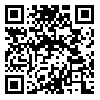Volume 12, Issue 44 (Spring 2018)
MLJ 2018, 12(44): 7-26 |
Back to browse issues page
Download citation:
BibTeX | RIS | EndNote | Medlars | ProCite | Reference Manager | RefWorks
Send citation to:



BibTeX | RIS | EndNote | Medlars | ProCite | Reference Manager | RefWorks
Send citation to:
Qanbarpour B, Naghibi S A. Study of Permissibility of Gender Selection in Imamiyah Jurisprudence. MLJ 2018; 12 (44) :7-26
URL: http://ijmedicallaw.ir/article-1-855-en.html
URL: http://ijmedicallaw.ir/article-1-855-en.html
1- of Islamic Azad University of Qaemshahr, Law Department, Qaemshahr, Iran. (Corresponding author)
2- of Shahid Motahari University, Department of Law and Legal, Tehran, Iran
2- of Shahid Motahari University, Department of Law and Legal, Tehran, Iran
Abstract:
Selection of the gender of children has been one of the major humanitarian concerns. Nowadays, with the advancement of genetic technology, couples are choosing a gender-specific child of a pre-implantation genetic method with many goals such as preventing sexually transmitted diseases and the interest of parents in a child of a specific gender. The question that arises is whether such a practice that captures the space of chromosomes complies with the principles of shariah? Some jurisprudents have considered the practice of such an act as a prohibited form of change in creation and contrary to divine providence, and others consider it as impermissible. The present research, which has been arranged by a descriptive-analytic method to prove the legitimacy of gender selection, emphasizes the idea that scientific advancement has provided this opportunity for human beings to discover some of the laws and traditions of creation to others by recognizing the relations of nature. Therefore, this conversion is not only contrary to divine providence; it is also a transit from one's perspective to another's providence, and its legitimacy is justified by adjectives such as the principle of the law and the rules of jurisprudence of the law, the law and the law.
Please cite this article as: Qanbarpour B, Naghibi SA. Study of Permissibility of Gender Selection in Imamiyah Jurisprudence. Iran J Med Law 2018; 12(44): 7-26.
Please cite this article as: Qanbarpour B, Naghibi SA. Study of Permissibility of Gender Selection in Imamiyah Jurisprudence. Iran J Med Law 2018; 12(44): 7-26.
Type of Study: Original Article |
Received: 2016/07/4 | Accepted: 2017/10/28
Received: 2016/07/4 | Accepted: 2017/10/28
Send email to the article author
| Rights and permissions | |
 |
This work is licensed under a Creative Commons Attribution-NonCommercial 4.0 International License. |





